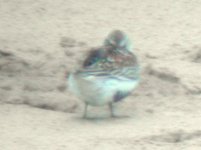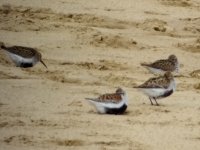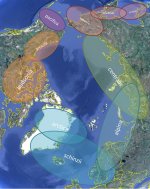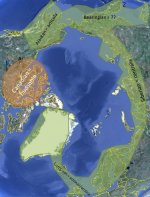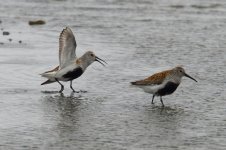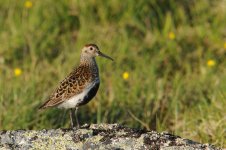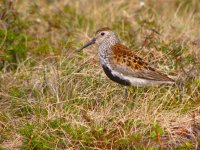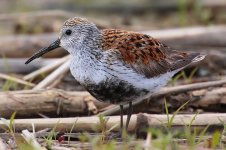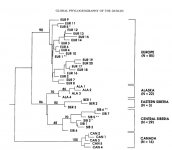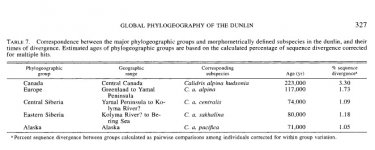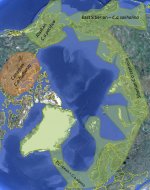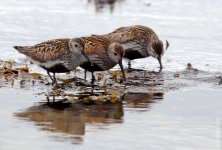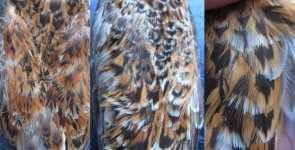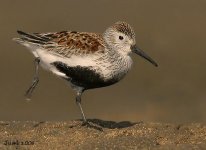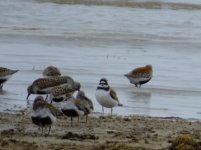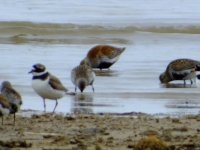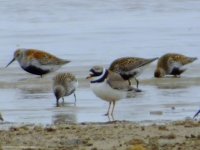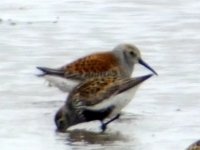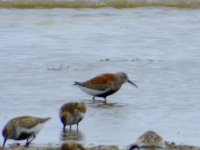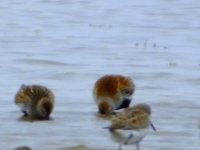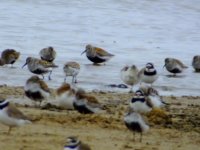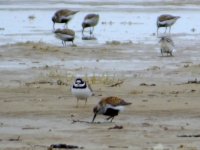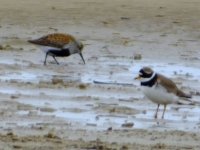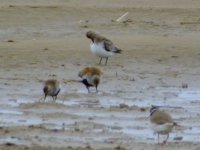Jane Turner
Well-known member
Its the time of years again where the pathetically billed schinziis and arcticas start to get outnumbered by alpina types. (5000 today)
Within those larger brighter birds there are some that stand out as bigger and brighter still (though not as yes the brick red Curlew Sandpiper-sized birds that were here two years ago.)
That said two birds caught my eye today for being both rich red above (with very little black in the centres of the scaps) and with beautiful paired white tips to the rear scaps. The first was from the house and about 600m away - digiscoped through double glazing... so I went out and found a different bird. Both sleeping males and them photos don't do them justice.
centralis seems very poorly described, but I'm coming to the view that the pearl-like scap tips are helpful.
Within those larger brighter birds there are some that stand out as bigger and brighter still (though not as yes the brick red Curlew Sandpiper-sized birds that were here two years ago.)
That said two birds caught my eye today for being both rich red above (with very little black in the centres of the scaps) and with beautiful paired white tips to the rear scaps. The first was from the house and about 600m away - digiscoped through double glazing... so I went out and found a different bird. Both sleeping males and them photos don't do them justice.
centralis seems very poorly described, but I'm coming to the view that the pearl-like scap tips are helpful.




